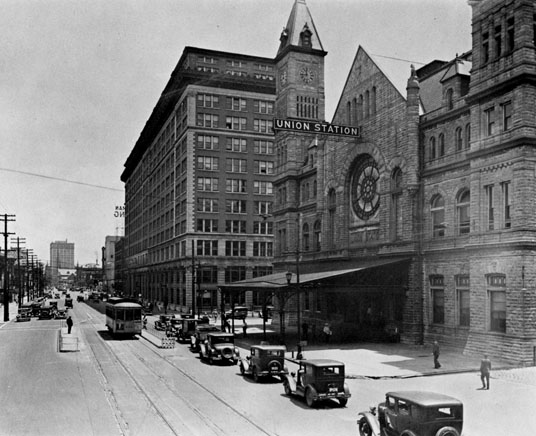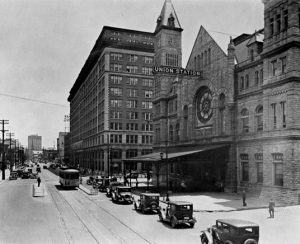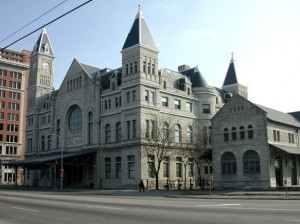
By Glenn Swain

Standing stoically in Louisville, KY is historic Union Station, which has been the gathering place for bus and rail travelers for 120 years. Nearly every immigrant to Louisville and countless service men and women, including General Pershing, entered the city through the doors of Union Station.
Three U.S. Presidents – Franklin D. Roosevelt, Harry S. Truman and Dwight D. Eisenhower – also arrived in Louisville through Union Station. Among other celebrities was singer Sarah Bernhardt, who even tried out her famous voice in the cavernous confines of the waiting room.
“We have a responsibility to be custodians of what is an historic landmark,” says Barry Barker, executive director the Transit Authority of River City, which has occupied Union Station since April 1980.
Recently, TARC received funds to improve service on two of its bus routes. The new technology will enable TARC to run buses no more than 15 minutes apart from 6 a.m. to 9 at night.
“We’re hoping to demonstrate is frequent, steady service for our customers,” Barker says.
From 1891 to 1976, Union Station played a significant role in the history of public transportation in Louisville, Kentucky. Some Louisvillians have many fond memories of the grandeur and drama of passenger train service to and from Louisville’s Union Station. To keep Union Station as the center of public transportation in Louisville, TARC restored the beauty of Union Station and keeps the building open to the public Monday through Saturday.
TARC’s vision was to restore this community jewel and provide office space for its daily business. The board of directors recognized that recycling Union Station would retain the building’s beauty and capitalize on the ecological benefits. Architects valued the building’s natural resources – unusually thick masonry walls, large operable windows, ceramic tile and pine wood floors, red oak wainscots, marble and raised paneled walls, stain glass skylight and rose windows.

The atrium features a large vaulted ceiling lighted by a skylight of 84 panels of stained glass. Several art glass panels grace both the north and south façade. The floor is ceramic tile and marble wainscot and a number of the station’s concourse benches remain in place today.
Passenger rail service reached its peak in mid-1922 with 120 trains arriving or departing daily. By mid-1947, the number of trains had been reduced to 76 a day and by late 1976 only two passenger trains stopped at Union Station. On October 31, 1976, the last passenger train left Union Station for Nashville.
The recent downturn in the economy has forced TARC to cutback 7 percent, leading to a 2 percent loss in ridership. While the economy has slowed, events at Union Station have not. The historic building has been the backdrop for the Louisville Ballet’s end-of-season fundraiser and other prestigious events.
“Sometimes I step back and view Union Station not as a work place but a tremendous piece of architecture,” Barker says. “The place has an aura about it.” BR
